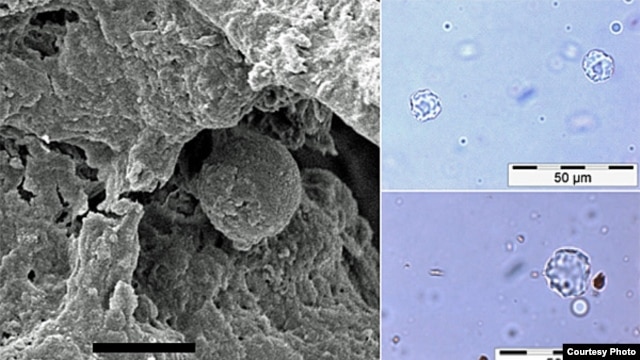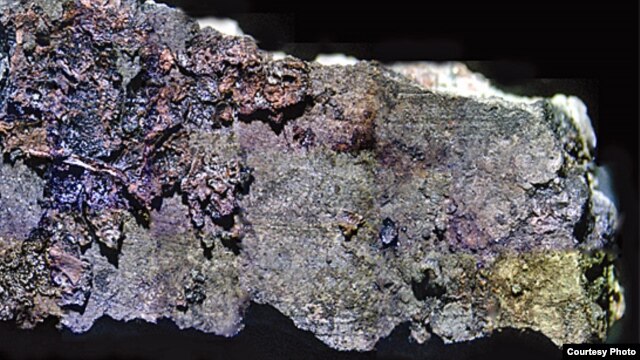Researchers Reveal Mysteries of Caveman Cuisine
“We like dirty pots. People who can’t cook very well," she said. "They burn food onto their pots, that’s what we’re after.”
It’s from those charred remnants of prehistoric dinners that she and her colleagues isolated the first evidence of a spice used in cooking.
They found microscopic traces of garlic mustard in crusts on 6,000-year-old pots found in Germany and Denmark.
Garlic mustard grows wild today throughout Europe and western Asia. And it’s an invasive species in North America.
“The leaves smell like garlic, but the seeds taste like mustard,” Saul explained. “Hence the name garlic mustard.”
Microscopic fossils
Prehistoric use of spices has been hard to study because plants decompose quickly and are not usually preserved.
But when plant cells decay, they leave behind petrified outlines of themselves in silica.
Studying these outlines, Saul found modern garlic mustard seed was an excellent match.
Saul said these early Europeans were using garlic mustard seed to flavor soups of fish or game meat and starchy plants.
Compared to the other ingredients in the soup, she said they “have pretty much no other nutritional value. Basically, its taste value is all it’s got going for it.”
That’s why she considers it a spice.
Cooking for flavor
Saul added that there have been older finds of seeds and plants that may have been used for flavoring, but none found in cooked food.
“The thing that makes our results quite interesting is that because we’re working on pottery residues, we can relate the spice use to an actual culinary use.”
And it suggests that, rather than just cooking to fill bellies, people were cooking for flavor, even 6,000 years ago.
That’s right about at the time that cultures in the region were changing from hunting and gathering to farming.
According to Saul, there’s evidence that the use of spices migrated along with the arrival of agriculture.
Chili peppers
In the Americas, chili peppers were among the first domesticated plants. That culinary breakthrough happened around the same time, about 6,000 years ago, according to retired University of Missouri anthropologist Deborah Pearsall.
“It’s not surprising that people eating kind-of a bland diet of domesticated plants would be interested in spices,” she said.
Pearsall was part of a group that made that discovery by looking at microscopic fossils from the New World, like Saul and her team did in the Old World.
She said the new research opens up the use of these tiny fossils to discover how our ancestors around the world used plants for cooking as well as medicine.
Stone Age sophisticates
For Saul, her spice find suggests that people back then were remarkably sophisticated.
“I like the idea that people are just being incredibly creative,” she said. “I do really like the idea that the knowledge that people had in prehistory [was] very complex. There were so many plants, and so many properties to all of these different foods that people were manipulating to really enhance their cooking.”
So maybe the average caveman was more cultured than we give him credit for.



